|
Click pictures for a larger version.
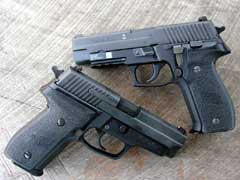
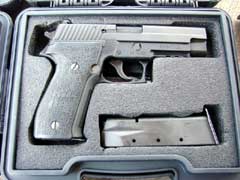
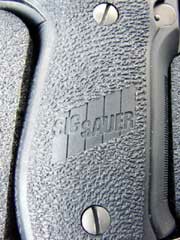
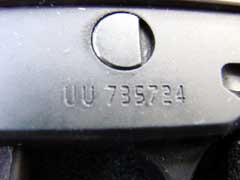
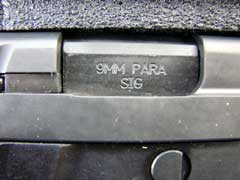
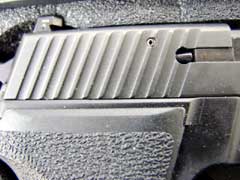
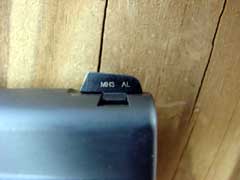
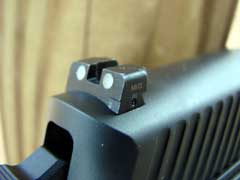
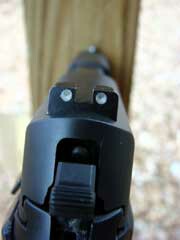
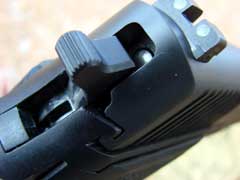
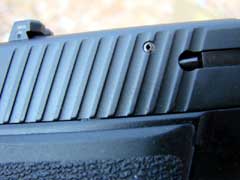
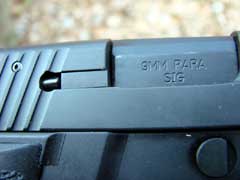
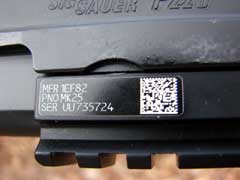
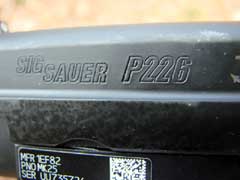
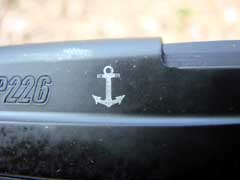
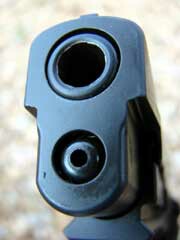
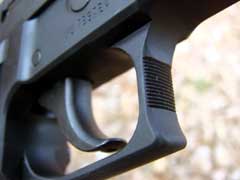
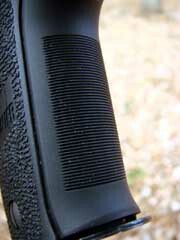

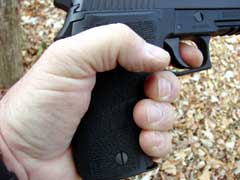
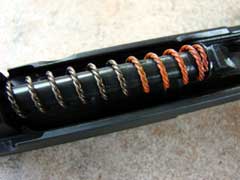
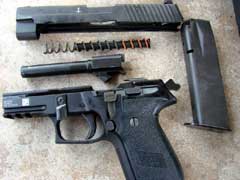
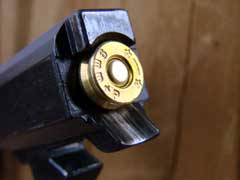
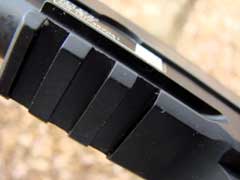
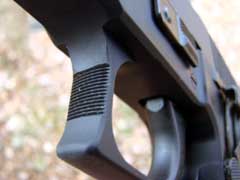
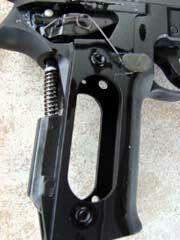
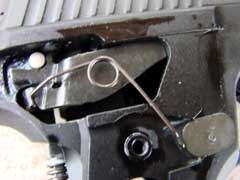
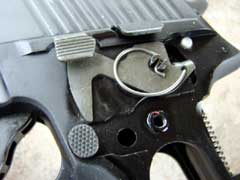
MK25.
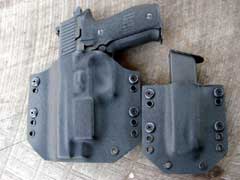
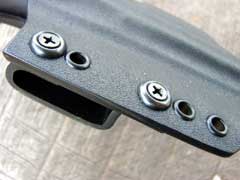
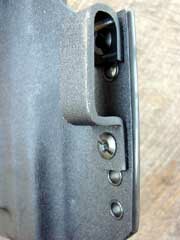
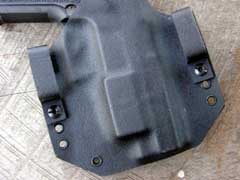
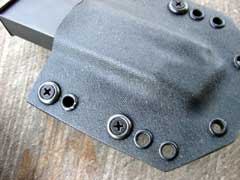
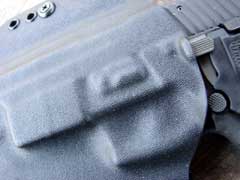
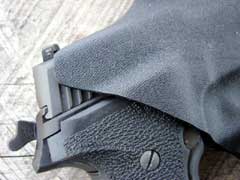
ECS-Cobra holster and mag pouch.
|
|
Ever since I first laid hands upon the
Browning BDA 45 back in 1977, I have always liked the Sig
semi-automatic pistols. The BDA was a Sig P220 re-branded for
importation by Browning, and was like nothing else on the market
at that time. I was in Uncle Lee’s Sporting Goods in Paris,
Tennessee, lusting over things which I could not afford to buy
beneath the glass in the handgun display cases, when I spotted
the three new BDA pistols; one chambered for the 9x19mm, another
in 38 Super, and the third in 45 ACP. The fellow behind the
counter placed the 45 into my hands, and I knew that someday, I
would have to have one, but being only eighteen years old and
sacking groceries after school for $1.20 per hour, that BDA was
far out of reach financially for me at the time, and all of my
shooting money was spent for lead, primers, and powder to feed
my Ruger 357 Magnum. I read every word that I could glean from
magazines about the new pistol, but it would be many years
before I fired my first Sig. By then, Browning had stopped
importing the Sig, and the pistols were labeled as Sigs, but the
pistol had the same great feel in my hands. The P220 had the
double-action/single-action (DA/SA) trigger, but later variants
have been offered with DA only or SA only triggers. The early
220 pistols had a European style magazine release, located at
the heel of the grip, but they now have been repositioned to the
location preferred by most, at the rear of the trigger guard on
the left side of the frame.
Sig’s first successful entry into the
modern double-stack magazine high-capacity 9mm pistol market was
the P226, which is still in production, and is the basis for the
two pistols shown here. M11 is the US Military designation for a
slightly-modified Sig P228, and the MK25 is a slightly-modified
P226.
Critical specifications for the Sig pistols
are listed in the chart below. Weights are listed in ounces.
Linear dimensions are listed in inches. Trigger pull is listed
in pounds of resistance, as measured with my Lyman digital
trigger pull scale. DA is the double-action trigger pull. SA is
the single-action trigger pull. Height includes sights and
magazine bases. Maximum width is measured across the top of the
frame, and includes the slide lock.
| |
MK25 |
M11 |
| Chambering |
9x19mm |
9x19mm |
| Weight with Empty Magazine |
32.4 oz. |
29.5 oz. |
| Trigger Pull DA |
7.8 lbs. |
8.3 lbs. |
| Trigger Pull SA |
4.2 lbs. |
3.8 lbs. |
| Magazine Disconnect Safety |
No |
No |
| Loaded-Chamber Indicator |
No |
No |
| Barrel Length |
4.4" |
3.84" |
| Barrel Diameter |
0.528" |
0.528" |
| Overall Height |
5.55" |
5.41" |
| Overall Length |
7.75" |
7.1" |
| Grip Thickness |
1.34" |
1.29" |
| Frame Width |
1.06" |
1.06" |
| Slide Width |
1.11" |
1.11" |
| Maximum Width |
1.45" |
1.45" |
| Trigger Reach |
2.9" |
2.78" |
| Sights |
3-Dot Tritium |
3-Dot Tritium |
| Magazine Capacity |
15 |
15 |
| Magazines Supplied |
2 |
3 |
| Accessory Rail |
Yes, 1913 Picatinny |
No |
I fired a variety of ammunition through the
two Sig 9mm pistols over the chronograph to check velocities,
with the results listed in the chart below. Velocities are
listed in feet-per-second. Bullet weights are listed in grains.
JHP is a jacketed hollowpoint bullet. DPX, Buffalo Bore Lead
Free, and Double Tap Tac-XP are hollow nose homogenous copper
bullets that are made by Barnes Bullets. Guard
Dog is a FMJ with a soft plastic core to promote rapid
expansion. FP is a frangible, pre-fragmented flatnose bullet.
FMJ is a full metal jacket roundnose bullet. PB is Pow’RBall,
a specialty bullet from Cor-Bon. Glaser is a pre-fragmented
bullet. Velocities were taken at an elevation of 541 feet above
sea level, with an air temperature of forty-two degrees
Fahrenheit. Velocities were recorded at ten feet from the
muzzle.
| Ammunition |
Bullet Weight |
Velocity MK25 |
Velocity M11 |
| Buffalo Bore Lead Free
+P HP |
95 |
1486 |
1455 |
| Buffalo Bore Lead Free
+P HP |
115 |
1273 |
1259 |
| Federal Guard Dog |
105 |
1192 |
1151 |
| Double Tap +P Tac-HP |
115 |
1170 |
1173 |
| Double Tap +P FMJ |
147 |
1084 |
1055 |
| Atomic +P HP |
124 |
1228 |
1204 |
| WCC NATO FMJ |
124 |
1090 |
1076 |
| Fiocchi
FMJ |
115 |
1106 |
1096 |
| Buffalo Bore +P JHP |
124 |
1297 |
1263 |
| Buffalo Bore +P JHP |
115 |
1313 |
1290 |
| Buffalo Bore +P JHP |
115 |
1427 |
1401 |
| Buffalo Bore +P JHP |
147 |
1111 |
1090 |
| Cor-Bon Glaser |
80 |
1601 |
1592 |
| Cor-Bon +P JHP |
115 |
1346 |
1320 |
| Cor-Bon Pow’RBall |
100 |
1322 |
1300 |
| Cor-Bon +P DPX |
115 |
1231 |
1212 |
| Cor-Bon +P JHP |
125 |
1291 |
1280 |
| Stryker FMJ |
115 |
913 |
902 |
Sig pistols have several built-in safety
features that make them suitable for carry. The hammer is
blocked from contacting the firing pin if dropped. It is a
rebounding design, and is blocked from moving forward unless the
trigger is held to the rear. Also, the firing pin block prevents
the firing pin from moving forward unless the trigger is held to
the rear. To safely decock a cocked hammer, the decocking lever
lowers the hammer without the user having to touch the trigger.
The slide locks open on an empty magazine, and the slide lock
lever is located at the left rear of the frame.
For carrying the Sig pistols, I used a
holster from a manufacturer that is new to me, but this won’t
be the last time that I use the excellent holsters from Extreme
Concealment Systems. Shown here is their Kydex ECS Cobra holster
and matching magazine carrier. Both the holster and carrier are
very well-fitted, and both are also adjustable for height and
cant, by moving the belt loops up or down in the holes provided.
The holster is thin, stiff, and conceals very well. One of the
great advantages of Kydex is that while thin, it retains its
shape with the gun removed, greatly aiding in ease of
re-holstering the weapon. The ECS Cobra holster covers the
trigger guard, and the back of the holster is raised, to protect
both the weapon and the clothing from wear. All Extreme
Concealment holster have a one hundred percent satisfaction
guarantee, and a lifetime warranty. One thing that I really like
about the ECS Cobra is that it conceals much better than most
other Kydex holsters on the market. The ECS Cobra is designed,
formed, and fitted with concealment in mind, and if desired, can
be quickly adapted to inside the pants carry by swapping out the
belt loops for j-hooks. Unlike most Kydex holsters on the
market, which are black or maybe olive green, Extreme
Concealment offers their holsters in a variety of colors and
patterns, from pink to camouflage, to suit any preference.
Back to the two Sig pistols, both proved to
be reliable and accurate. Using the variety of ammunition listed
above, only one malfunction of any kind occurred during testing.
Every cartridge fed, fired, and ejected perfectly, except for
one cartridge that evidently had a bad primer. It did fire on
the second pull of the trigger, as the Sig design has multiple
strike capability. I tested the two Sig pistols for accuracy
using a Ransom Master Series machine
rest, at a distance of twenty-five yards. I could discern no
difference in the accuracy of the two pistols, with five-shot
groups averaging between one and one-half to three inches,
depending upon the ammunition used. I also fired the two pistols
at steel targets from twenty-five to one hundred yards. The
sights work very well for quickly acquiring a sight picture, and
both pistols wear the SigLite tritium night sights. Also, to
further aid in low-light shooting, I installed a Lasermax Guide
Rod laser into the MK25. It is very easy to install, and can be
activated with the trigger finger of either a left-handed or
right-handed shooter.
These two Sig pistols are built to fill
military contracts, so both have phosphate-coated internal
parts. The rail on the MK25 is 1913 Picatinny compliant. The
pistols also wear the old-style two-piece grips, and bear US
Department Of Defense labels.
Check out the M11 and MK25 pistols online at www.sigsauer.com.
To order quality 9mm ammunition, go to www.buffalobore.com,
www.doubletapammo.com,
www.luckygunner.com,
and www.theamericanmarksman.com.
To order the holster and mag pouch shown
here, go to www.extremeconcealment.com.
To order the Lasermax Guide Rod laser, go to www.lasermax.com.
Jeff Quinn
  
Got something to say about this article?
Want to agree (or disagree) with it? Click the following link to
go to the GUNBlast Feedback Page.
|
|
Click pictures for a larger version.
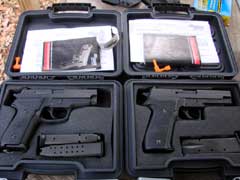
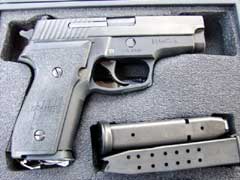
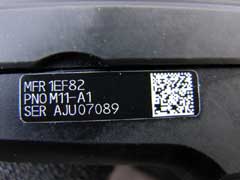
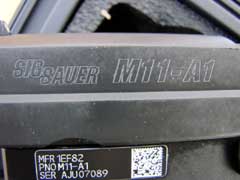
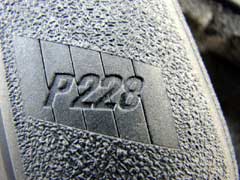
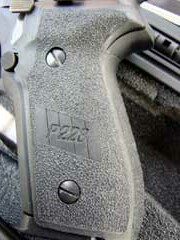
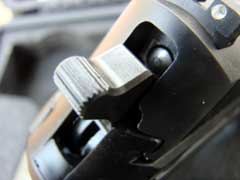

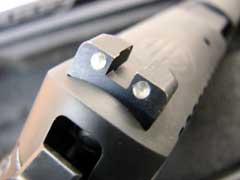
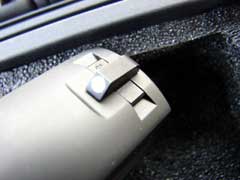
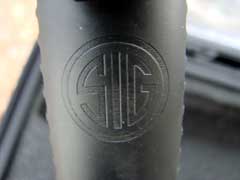
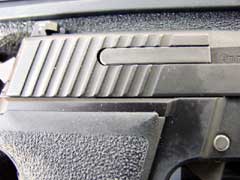
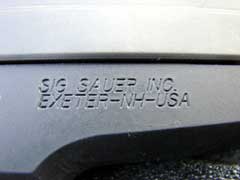
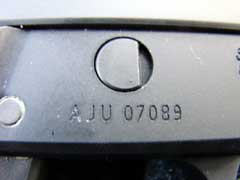
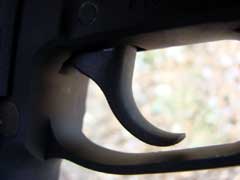
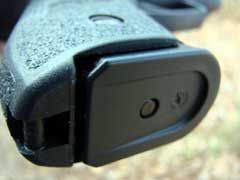
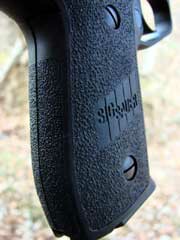

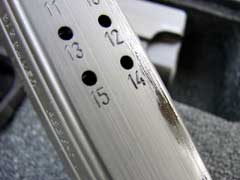
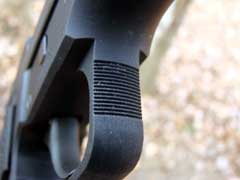
M11A1.
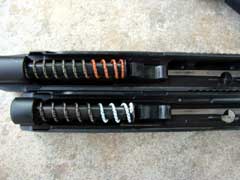
MK25 (top), M11 (bottom).
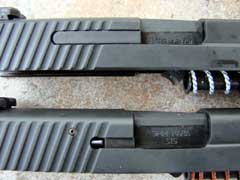
M11 (top), MK25 (bottom).
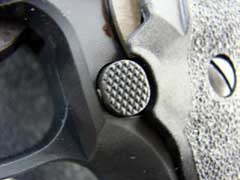
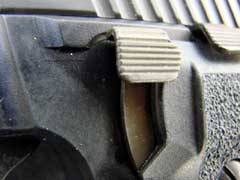
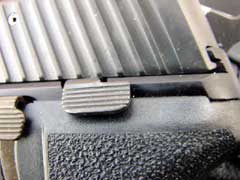
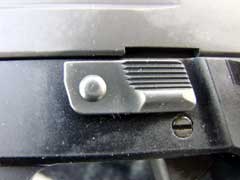
Top to bottom: magazine release, decocker, slide lock
lever, disassembly lever.
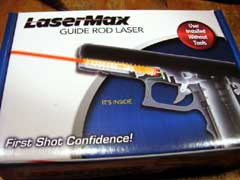
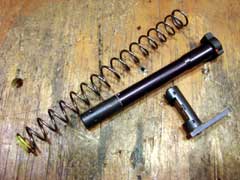
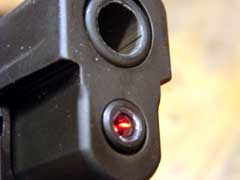
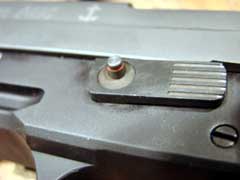
LaserMax guide rod laser.
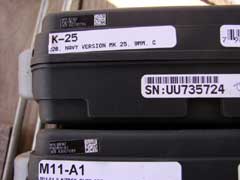
|
![]()
![]()